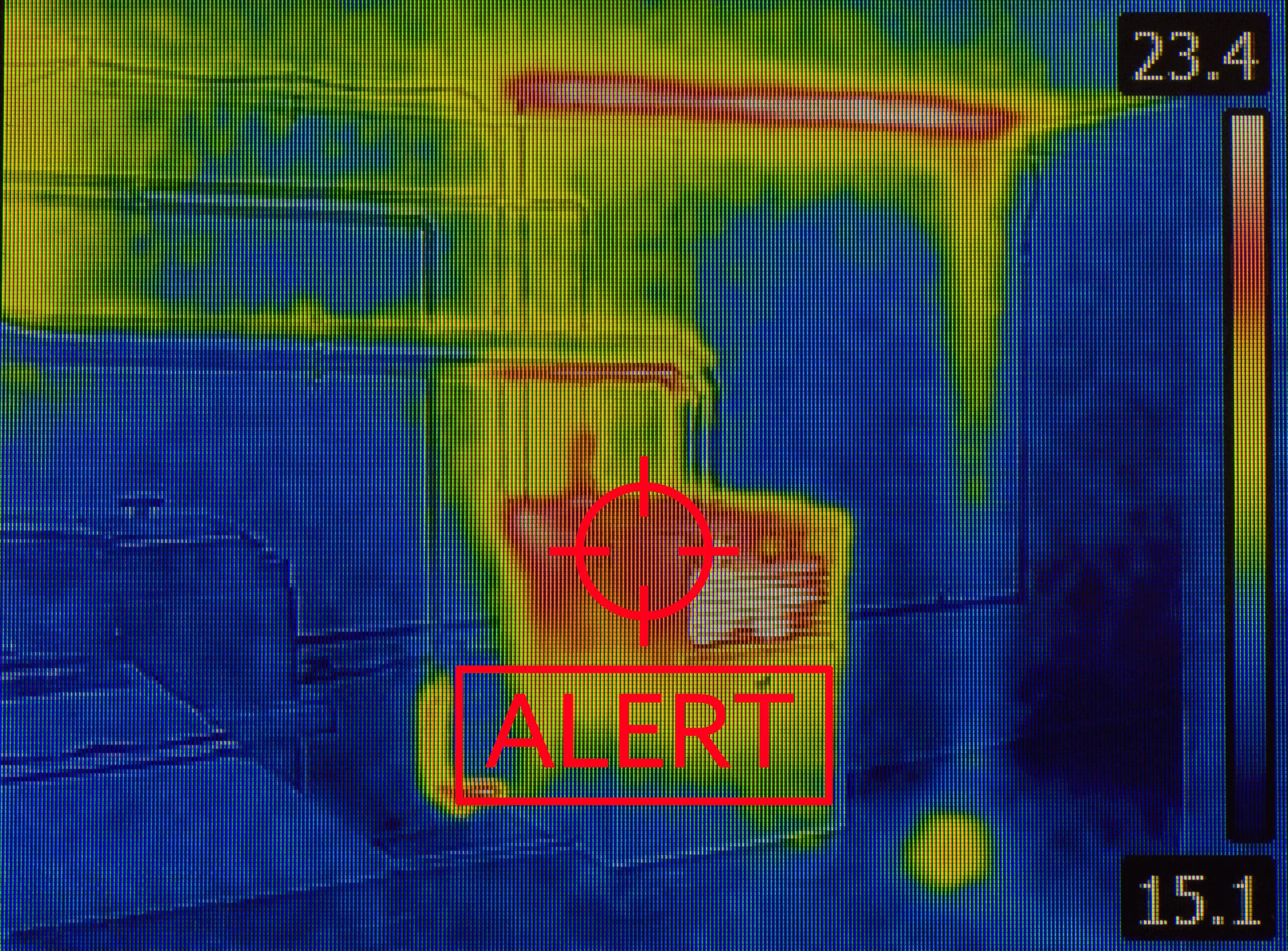This blog was submitted by Southern Forest Products Association associate member Opticom Tech. The original post can be found by clicking here.
When you ask a sawmill manager to name the most expensive word in the plant, the answer is usually “downtime.” That’s where thermal cameras can help.
Paused processing operations can bleed tens of thousands of dollars per hour in idle labor, increased holding costs, and missed deliveries.
Thermal video monitoring is already a proven first line of defense against one of the biggest downtime risks — fire — but the same cameras that watch for ignition sources can do double duty as a 24/7 condition-monitoring system.
By turning a fire-monitoring asset into a predictive-maintenance tool, mills can schedule repairs on their own terms, cut unplanned outages, and stretch the life of critical equipment.
Let’s explore how thermal cameras can be part of a sawmill’s maintenance team.
Heat: The Earliest Symptom of Mechanical Distress
Excess heat is rarely a good thing, and it’s rarely meaningless. It is the byproduct of worn bearings, unbalanced rotors, inadequate lubrication, overloaded drives, and dozens of other failure modes.
Because abnormal heat often appears days or even weeks before vibration or noise suggests a problem, infrared (IR) thermography has become one of the must-have predictive maintenance technologies.
Why Preventative Maintenance in Sawmills Is Different
Most industrial plants fight heat in a few motors and gearboxes; a sawmill fights it everywhere.
High-RPM planers shave boards in milliseconds. Kilns, debarkers, chippers, and conveyors all push mechanical and electrical components to their limits — usually in proximity to combustible dust and shavings.
Heat from unexpected friction is an invisible sign that sawmill processes are vulnerable to fire. If a friction-generated hotspot is from a gear about to start sparking, the risk multiplies.
Traditional point-temperature sensors or handheld IR guns can spot problems, but they see only the exact spot they’re aimed at and only when someone happens to walk by.
Fixed thermal video cameras, on the other hand, cast a wide field of view over the entire planer room, debarking process, carriage line, and other areas of the mill. They capture not just the hottest pixel but the complete thermal signature of every moving part, every second of every shift.
Turning Thermal Data into Maintenance Intelligence
You know thermal imaging can help, but where should you start? Here are a few key areas of the mill to watch:
- Motors and Gearboxes: Localized heating can flag bearing wear, shaft misalignment, or impending lubrication failure.
- Planer Heads: Heat can indicate resin buildup, worn cutter heads, or other issues, which can degrade surface quality and raise ignition risk at the same time.
- Electrical Cabinets: Overheated breakers or busbars can indicate loose connections or overloaded circuits.
- Conveyors and Debarkers: Excess friction on idlers or chain drives can point to mis-tensioned belts or debris accumulation.
For example, an area that normally runs at 60°C (140°F) but drifts upward to 75°C (167°F) within a week may not trip a fuse or start a fire, but it is sending a clear early-warning signal.
With continuous thermal video feeds, these anomalies appear as bright spots long before smoke, vibration, or noise betray the fault. Alerts can be customized to come through the mill’s fire alarm system, text message, on-screen alert, or email based on customized temperature thresholds chosen by the mill.
Planned Vs. Unplanned Maintenance: The ROI
The financial argument is straightforward:
- Downtime Avoided: Every minute saved on the critical path adds finished board-feet to the day’s tally.
- Component Life Extended: Bearings that run cooler last longer; motors that stay within design temperature avoid insulation breakdown.
- Incident Reduction: Fewer seized rollers and overheated knives translate into fewer fires and injury incidents.
- Insurance Savings: Many sawmill insurance companies offer discount incentives for facilities with thermal imaging solutions.
In addition to the dollar ROI, there’s also increased safety, proof for insurance purposes, and other benefits. R
Final Thoughts
Fire detection alone justifies thermal cameras in a sawmill. But using that same video monitoring equipment to expose hidden wear, misalignment, and overloads multiplies the return on investment. Thermal video monitoring transforms maintenance from a reactive scramble to a scheduled, planned process that happens when the mill, not the machine, decides it is needed.
